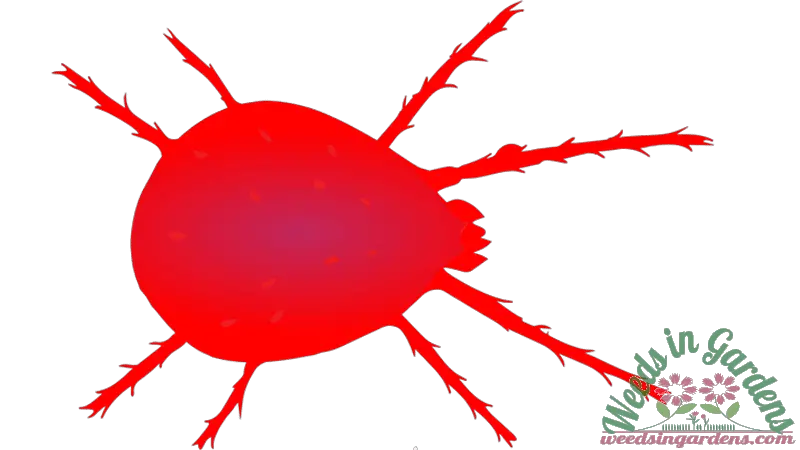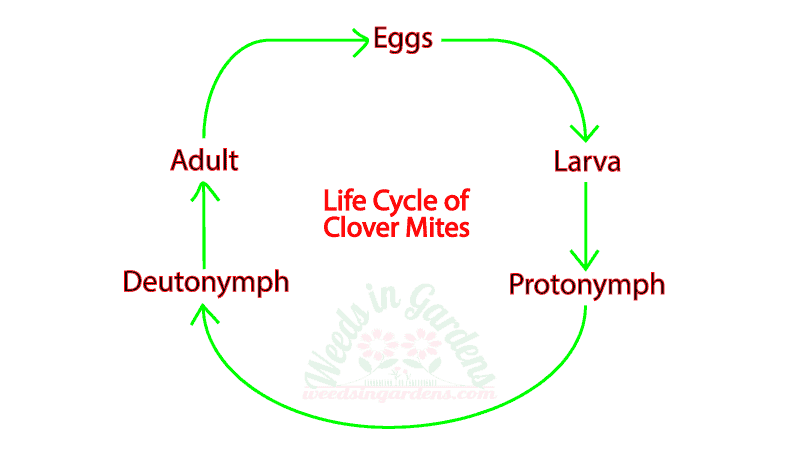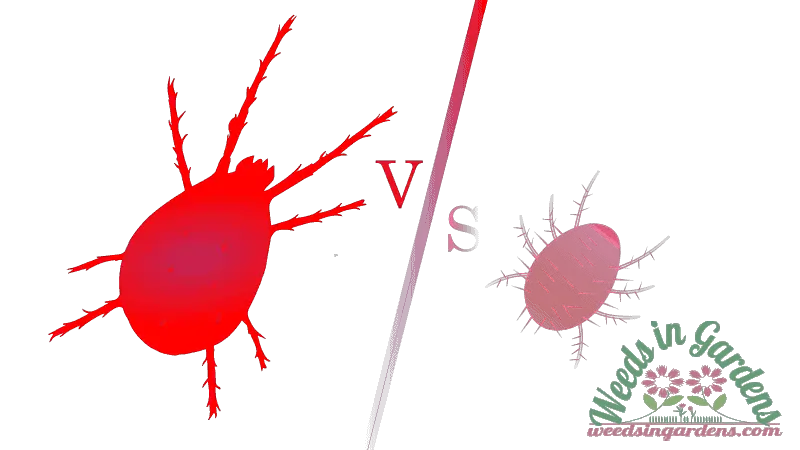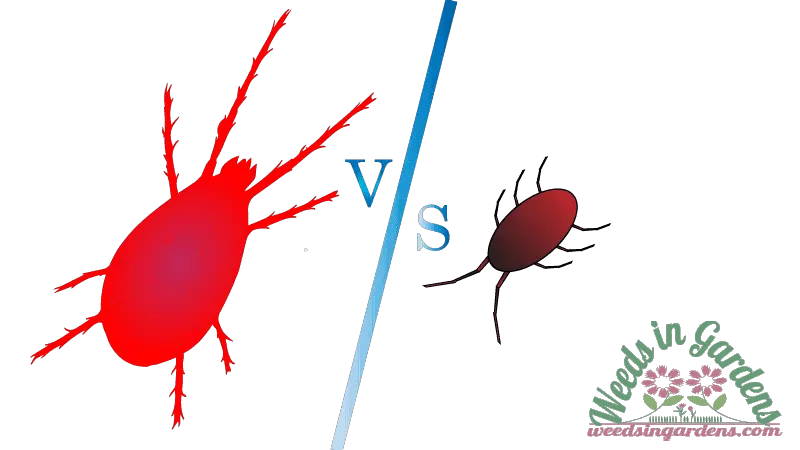When it comes to dealing with pests, it’s crucial to identify and understand the specific creatures causing trouble in order to address the issue effectively. Lets delve into the world of pests and focus on two common culprits: clover mites and bed bugs. Additionally, we’ll explore the key differences between clover mites and another pest often mistaken for them: chiggers.
Knowing the distinctions between these pests is vital because prevention, treatment, and control methods can vary significantly. From this article, you’ll be equipped with the knowledge necessary to differentiate between clover mites, bed bugs, and chiggers, enabling you to take appropriate action when faced with these nuisances.
Now, let’s embark on a journey to uncover the characteristics, behaviors, habitats, and potential harm associated with clover mites and bed bugs. We’ll also shed light on the similarities and differences between clover mites and chiggers, providing you with valuable insights to help you combat these pesky intruders effectively.
Continue reading to become a pest-savvy individual, armed with the knowledge needed to protect your home, family, and peace of mind.

Clover Mites
A. Identification and Physical Characteristics
Clover mites are tiny arachnids that belong to the spider family. They are mostly found in residential areas and are known for their reddish-brown coloration. Measuring only about 1/30th of an inch in length, they have an oval-shaped body and eight legs. Despite their tiny size, they can still be visible to the naked eye.
B. Behavior, Habits and Distribution
Clover mites are found worldwide in Asia, Europe, Africa, Australia, and North and South America. Clover mites are primarily outdoor pests that feed on plants, particularly clover, grasses, and other vegetation. They remain most active during the spring and fall seasons, when temperatures are moderate. When the weather becomes hot and dry, clover mites may seek shelter indoors, which can lead to infestations in homes.
Clover mite is not known to bite humans or pets, nor do they transmit diseases. But when they invade structures in large numbers, leaving behind tiny red smears and stains on surfaces, they can become an annoyance.
C. Common Locations and Habitats
Clover mites are commonly found in lawns, gardens, and fields where there is an abundance of vegetation. They tend to congregate on south-facing sides of buildings, particularly on warm surfaces such as windowsills, doors, and walls.
D. Potential Harm or Nuisance Caused by Clover Mites
While clover mites do not pose any direct harm to humans, their presence can be bothersome. When crushed, they can leave red stains on walls, carpets, and furniture. Their invasion of homes can also create a sense of unease and discomfort.

E. Effective Prevention and Control Measures
To prevent clover mite infestations, it’s essential to make a barrier between your home and the surrounding vegetation. Some effective prevention and control measures include:
- Sealing cracks and gaps: Inspect your home for any openings and seal them properly to prevent clover mites from entering.
- Removing vegetation near the foundation: Trim back plants and shrubs that come into direct contact with your home’s exterior.
- Applying barriers: Consider applying a insecticide or chemical barrier around your home perimeter to deter clover mites.
- Regular cleaning: Vacuuming clover mites from surfaces and regularly cleaning windowsills and other entry points can help minimize their presence indoors.
- Professional assistance: If the infestation persists or becomes unmanageable, it is advisable to seek professional pest control services for effective eradication.
By implementing these preventative measures, you can significantly reduce the likelihood of clover mites invading your living space and enjoy a pest-free environment.

Clover Mite’s Life Cycle
An interesting fact about clover mites (Bryobia praetiosa) is that they have no males. All clover mites are female. They lay eggs without fertilization.
Red clover mites lay tiny globular eggs in spring or in autumn. The eggs are about 0.1mm in diameter and are bright red in color. The eggs are hatched at the end of spring or autumn and the larvae come out.

The larva of this tiny mite is also red. We know that the clover mite has 8 legs but its baby(larva) has six.
To become an adult, clover mites have to pass two more life stages- protonymph and deutonymph. They have eight legs in both stages. Adults live for about two weeks.
Clover mites vs. spider mites
- Spider mites are smaller than clover mites. They are almost half in body length than clover mites. So, these tiny mites are almost impossible to see without magnification.
- The presence and absence of setae is the main point to differentiate between the two mites.
- Spider mites are not indoor pests, but like clover mites, they cause heavy damage to plants.
- Spider mites are usually red in color. Though, brown, yellow, as well as green variants are also common.

The scientific name of spider mite is Tetranychus urticae. Both the mites belong to the same family, Tetranychidae.
Some differences between clover mites and spider mites:
| # | Clover Mites | Spider Mites |
| 1 | Clover mites are about 1mm in length. | Spider mites are about 0.5mm in length. |
| 2 | They don’t have setae. | Spider mites have setae on its body and legs. |
| 3 | Red or radish in color. | They may be red, brown, or green. |
| 4 | Clover mites are indoor pests. | They are not indoor pests. |
| 5 | Two front legs are longer than the other four legs. | The front legs of spider mites are not as much longer as clover mites. |

Clover mites vs. chiggers
Clover mites and chiggers are different things. Chiggers are the baby stage (larvae) of some mites. The size of a chigger is almost half of an adult red clover mite.

A. Physical Differences between Clover Mites and Chiggers
- Size: Clover mites are significantly smaller, measuring about 1/30th of an inch, while chiggers are slightly larger, usually around 1/150th to 1/20th of an inch.
- Color: Clover mites are reddish-brown, while chiggers are typically reddish or orange in color.
- Body structure: Clover mites have an oval-shaped body with eight legs, similar to spiders, while chiggers have a more segmented body with six legs in their larval stage.
B. Distinctive Behaviors and Habits of Each Pest
- Feeding habits: Clover mites feed on plant sap, while chiggers are parasitic and feed on the skin cells of humans and animals.
- Habitat: Clover mites are commonly found outdoors, particularly in lawns and gardens, while chiggers inhabit grassy and wooded areas, such as fields and forests.
- Active periods: Clover mites are active during the day, while chiggers are most active during the early morning and late afternoon.
C. Key Signs and Symptoms of Chigger and Clover Mite Bites
- Lack of bites by clover mites: Clover mites do not bite humans or animals, so the presence of tiny red dots or smears on surfaces is typically from the mites themselves and not bites.
- Itchy, red welts: Chigger bites typically result in intensely itchy, red bumps or welts on the skin.
- Clusters or lines of bites: Chigger bites often occur in groups or lines, as several chiggers may feed in close proximity.
- Common bite locations: Chigger bites commonly occur in areas where clothing fits tightly against the skin, such as ankles, waistbands, and underarms.
D. Tips for Preventing and Treating Clover Mite and Chigger Bites
Clover mites: To prevent clover mite encounters, create a barrier between your home and surrounding vegetation, seal cracks and gaps, and regularly clean surfaces to minimize their presence indoors. If you accidentally crush clover mites, clean the affected area with mild soap and water.
Chiggers: To prevent chigger bites, take the following precautions:
- Wear long sleeves, long pants, and closed-toe shoes when walking in grassy or wooded areas.
- Apply insect repellent to exposed skin, focusing on ankles, wrists, and waistbands.
- Shower or bathe immediately after being in chigger-prone areas to remove any chiggers that may be attached to your skin.
- To relieve the discomfort caused by chigger bites, apply calamine lotion or another over-the-counter anti-itch cream.
- Avoid scratching chigger bites to prevent infection. Seek medical attention if signs of infection appear.
By understanding the physical differences, behaviors, and specific signs associated with clover mites and chiggers, you can differentiate between the two pests and take appropriate measures for prevention and treatment. Remember to implement proper precautions to minimize encounters with chiggers in their natural habitats.

Some differences between red clover mites and chiggers are given here-
| # | Clover Mites | Chiggers |
| 1 | Adult clover mites can be seen by the naked eye if looked closely. | Chiggers are very small in size to be seen by the naked eye. A magnifying glass is needed. |
| 2 | Clover mites are red in color. | They may be of red or other colors. |
| 3 | Adult clover mites have eight legs | Chiggers are larvae of some mites and have six legs. |
| 4 | They do not bite. | Chiggers may bite you. |
| 5 | Clover mites are not parasites of humans or pets. | They are parasites. |
| 6 | Clover mites have five life stages: Egg-Larva-Protonymph-Deutonymph-Adult. | Chiggers have six life stages: Egg-Larva-Protonymph-Deutonymph-Tritonymph-Adult. |
| 7 | They live for only about one month. | Their life length is about two months. |
So, some points about chiggers-
- Chiggers are smaller than clover mites.
- Chiggers are invisible but you will notice their presence by their bite.
- Unlike clover mites, they have six legs.
- Unlike clover mites, chiggers have six stages in their life cycle.
- They live longer than clover mites.
Bed Bugs
A. Identification and Physical Characteristics
Bed bugs are small, reddish-brown insects that belong to the Cimicidae family. They have flat, oval-shaped bodies and are approximately of an apple seed size (up to 5-7 millimeters in length). Bed bugs are wingless and rely on humans and other warm-blooded animals for blood meals.
B. Behavior and Habits
Bed bugs are nocturnal pests that are primarily active at night. They are attracted by carbon dioxide and body heat, which leads them to their preferred hosts – humans. Bed bugs feed on blood, typically biting exposed areas of skin while their victims are sleeping.
After feeding, bed bugs retreat to hiding spots in cracks, crevices, and other secluded areas near their hosts. Common hiding places include mattresses, bed frames, headboards, furniture, and even electrical outlets. Despite their name, bed bugs can infest a wide range of environments, not just beds.
C. Common Locations and Habitats
Bed bugs are highly adaptable and can be found in various settings, including homes, hotels, dormitories, hospitals, and public transportation. They can hitchhike on luggage, clothing, and furniture, and thus spread from one location to another easily.
D. Health Risks and Discomfort Associated with Bed Bugs
Bed bugs can transmit diseases. Their bites can lead to itching, redness, and allergic reactions in some individuals. Prolonged infestations can cause emotional distress, sleep deprivation, and anxiety.
E. Strategies for Detecting, Treating, and Preventing Bed Bug Infestations
- Inspection: Carefully inspect mattresses, furniture, and other potential hiding spots for signs of bed bugs, such as live bugs, shed exoskeletons, dark fecal stains, or blood spots on bedding.
- Professional pest control: If you confirm a bed bug infestation, it is advisable to seek professional assistance for effective eradication. Pest control professionals may employ a combination of methods, including heat treatments, insecticide sprays, and vacuuming.
- Laundering and heat treatment: Wash infested clothing, bedding, and linens with hot water and dry them on high heat to eliminate bed bugs and their eggs.
- Mattress and furniture encasements: Use specially designed encasements to enclose mattresses and box springs, limiting bed bugs’ ability to infest these areas.
- Regular cleaning and decluttering: Vacuum frequently, paying attention to cracks, crevices, and baseboards. Reduce clutter to minimize potential hiding spots for bed bugs.
- Travel precautions: When traveling, inspect hotel rooms for signs of bed bugs before settling in. Keep luggage elevated and away from beds and furniture. Upon returning home, carefully inspect and clean your luggage.
By practicing vigilant detection, prompt treatment, and implementing preventive measures, we can minimize the risk of bed bug infestations and maintain a bed bug-free living environment.
Discover effective strategies on how to prevent bed bugs from spreading to other rooms. (continue reading for the strategies….)
Clover mites vs bed bugs

You know the difference between insects and mites. Bed bugs are under the class Insecta.
Bed bug’s scientific name is Cimex lectularius.
- Bed bugs are insects that are commonly found on beds and carpets.
- Unlike clover mites, bed bugs bite humans. They usually bite at night. Bed bugs feed on the blood of humans and animals.
- Like all other bugs, bed bugs have six legs, but mites have eight legs.
- Bed bugs have two long antennae in front of their head.
- Bed bugs are much larger than clover mites. They can be seen with the naked eye. The length of a bed bug egg is similar to the length of an adult clover mite. (great!)

Some differences between clover mites and bed bugs:
| Matter of comparison | Clover mites | Bed bugs |
| Type | They are mites. | They are insects. |
| Leg number | Adult mites have eight legs. | Adult bed bugs have six legs. |
| Color | Clover mites are commonly red. | Bed bugs are mostly reddish-brown. |
| Size | Body length is about 1mm. | Body length is about 6-7mm. |
| Life length | Mostly about one month. | They live for 5-6 months. |
| Life cycle | Clover mites have five stages in their life cycle. | There are seven stages (Egg-5 Nymphal stages-Adult stage) in bed bug’s life cycle. |
| Egg shape, size | Globular, 0.1mm in diameter | Barrel-shaped, about 1mm long. |
| Blood-feeding? | They do not feed on blood. | These bugs feed on blood. |
A. Physical Differences between Clover Mites and Bed Bugs
- Size: Clover mites are significantly smaller, measuring about 1/30th of an inch, while bed bugs are larger, growing up to 5-7 millimeters in length.
- Shape: Clover mites have an oval-shaped body, while bed bugs have a more elongated, oval shape.
- Color: Clover mites are reddish-brown in color, while bed bugs are also reddish-brown but may appear darker after feeding.
B. Distinctive Behaviors and Habits of Each Pest
- Feeding habits: Clover mites feed on plants and vegetation, extracting sap from their hosts, whereas bed bugs sucks the blood of humans and other warm-blooded animals.
- Nocturnal activity: Bed bugs are primarily active at night and seek out human hosts while they sleep, while clover mites are active during the day and may seek shelter indoors during hot, dry periods.
- Hiding spots: Bed bugs hide in crevices, cracks, and furniture near their human hosts, primarily infesting areas where people rest or sleep. In contrast, clover mites congregate on exterior surfaces, such as windowsills and walls, and may occasionally enter buildings in large numbers.
C. Key Signs and Symptoms of Clover Mite Infestation
- Visible presence: You may notice numerous tiny red dots on windowsills, walls, or other warm surfaces where clover mites congregate.
- Staining: When crushed, clover mites leave behind red stains on surfaces.
- Minimal impact on humans: Clover mites do not bite or transmit diseases to humans, so the presence of clover mites is primarily a nuisance rather than a health concern.
D. Key Signs and Symptoms of Bed Bug Infestation
- Bed bug bites: Bites from bed bugs typically appear as small, itchy, red welts on exposed areas of the skin.
- Blood stains and fecal spots: Bed bugs leave behind small blood stains on bedding and may also leave dark fecal spots on sheets or furniture.
- Presence of bed bugs: You may see live bed bugs, shed skins, or their eggs in hiding spots such as mattress seams, crevices, or furniture joints.
- Musty odor: In severe infestations, a distinct, musty odor may be present.
E. Steps to Differentiate between Clover Mites and Bed Bugs
- Size and appearance: Compare the size and shape of the pests. Clover mites are significantly smaller and have a more rounded body, while bed bugs are larger and have a more elongated shape.
- Feeding habits: Consider the feeding habits of the pests. If you are experiencing bites on your skin, it is likely caused by bed bugs rather than clover mites.
- Location: Determine the location of the infestation. Bed bugs are normally found in areas where people rest or sleep, while clover mites are more commonly found on exterior surfaces.
- Staining and signs: Look for red stains and smears on surfaces, which are characteristic of crushed clover mites, while blood stains and fecal spots are indicative of bed bug activity.
By carefully observing the physical characteristics, behaviors, and specific signs associated with each pest, you can differentiate between clover mites and bed bugs. This knowledge will help you take appropriate measures for identification, treatment, and control.
Conclusion
In conclusion, being able to distinguish between different pests is essential for effective pest management. This article has provided valuable insights into two common pests: clover mites and bed bugs, as well as the commonly mistaken identity of clover mites and chiggers. Understanding their physical characteristics, behaviors, habitats, and potential harm allows us to devise appropriate prevention, treatment, and control strategies.
Clover mites, with their small size and reddish-brown coloration, are primarily outdoor pests that feed on plants. While they may invade homes in large numbers, they do not bite humans or transmit diseases. Implementing preventive measures such as sealing cracks, trimming vegetation, and regular cleaning can help minimize clover mite infestations.
On the other hand, bed bugs, slightly larger and reddish-brown in color, are nocturnal pests that consumes the blood of humans and animals. They can infest various environments and cause discomfort through their bites. Detecting bed bug infestations, seeking professional assistance, laundering bedding, and maintaining cleanliness are crucial steps in addressing bed bug problems.
It’s also important to differentiate between clover mites and chiggers, as their behaviors and impact differ significantly. While clover mites are harmless to humans, chiggers can cause itchy bites. Taking precautions such as wearing protective clothing, using repellents, and showering after potential chigger exposure can prevent bites and minimize discomfort.
By familiarizing yourself with the characteristics and behaviors of these pests, you can identify them correctly and take appropriate action to address infestations and prevent future occurrences. Remember, when dealing with persistent or severe pest problems, consulting with pest control professionals is advisable for effective eradication.
Now, you are better equipped to protect your home, family, and well-being from the nuisances caused by clover mites, bed bugs, and chiggers. Stay vigilant, implement preventive measures, and promptly address any pest issues to maintain a pest-free environment and ensure your peace of mind.
